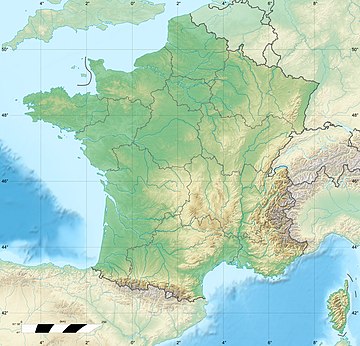| Siege of Chartres | |||||||
|---|---|---|---|---|---|---|---|
| Part of the French Wars of Religion | |||||||
 Image by Jean Perrissin and Jacques Tortorel of the siege in progress, the breach visible in the front | |||||||
| |||||||
| Belligerents | |||||||
| French Huguenot forces | Royalists | ||||||
| Commanders and leaders | |||||||
| Louis I de Bourbon, prince de Condé | Nicolas des Essars, Sieur de Linieres | ||||||
| Strength | |||||||
| Probably 9,000[1] | Some 6,000 (plus townspeople)[1] | ||||||
| Casualties and losses | |||||||
| 300 to 400 | 250 | ||||||
Siege and battle locations
The siege of Chartres (28 February – 15 March 1568) was a key event of the second French Wars of Religion. The siege saw the Huguenot forces fail to take the heavily defended town, ultimately concluding the second civil war in a negotiated settlement a week later. One of the very few engagements in the second civil war, the siege was led by Louis, Prince of Condé, fresh off regrouping after his defeat at the Battle of Saint-Denis. The defensive efforts were run by the military governor of Chartres, Nicolas des Essars, Sieur de Linières.
- ^ a b Wood, James B. (2002). The King's Army. Cambridge University Press. p. 20. ISBN 0-521-52513-6.

